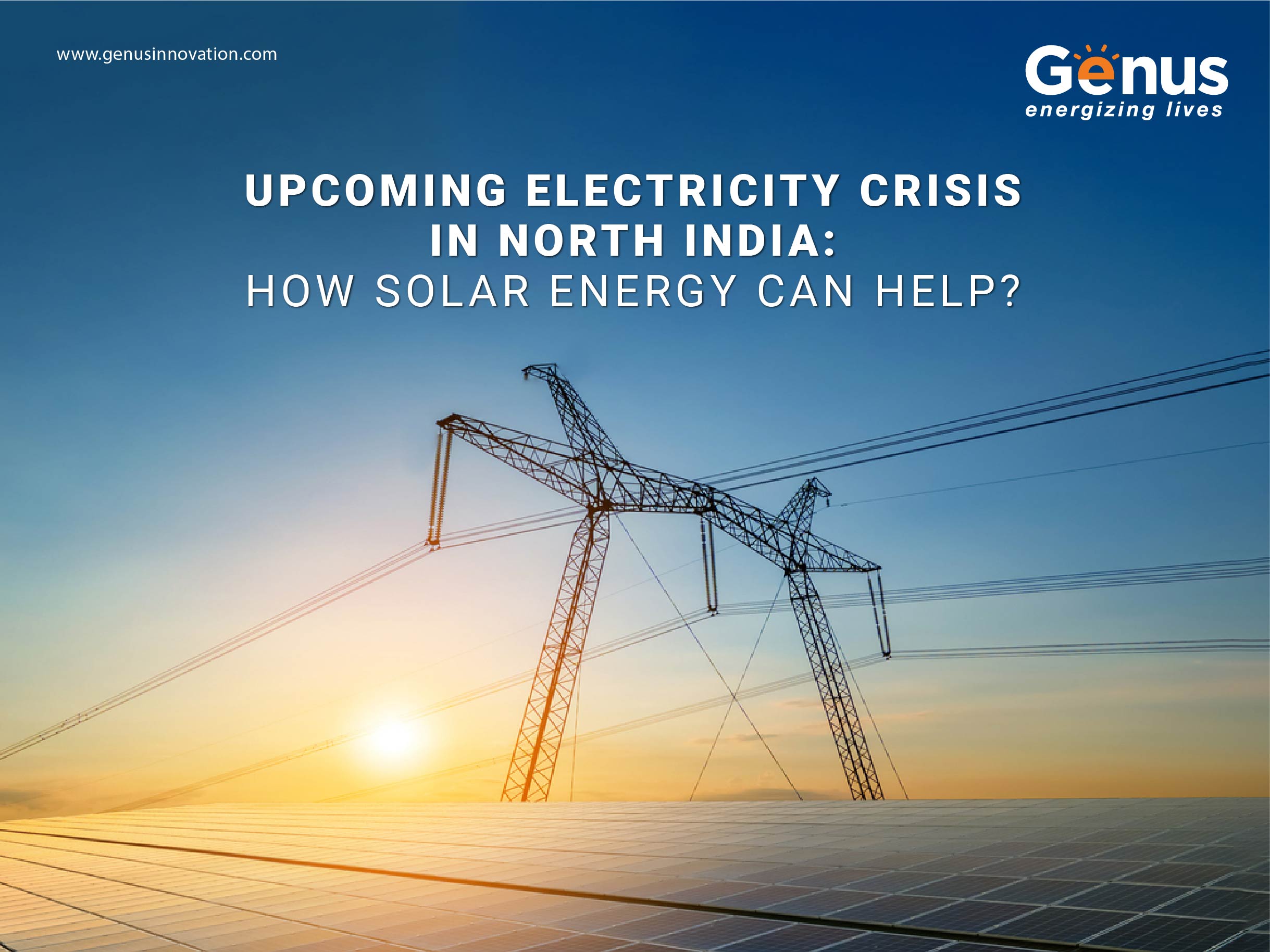
The electricity crisis in India, especially North India, including states like Haryana, Punjab, Uttarakhand, Uttar Pradesh, Delhi, Chandigarh, J&K, etc., has been a persistent issue for decades, causing significant disruption to the lives of millions of people. The problem has become even more acute in recent years, with several states facing regular power outages and load shedding.
As we approach the summer season, the situation is likely to worsen, with many parts of North India expected to experience heavy power cuts. In this blog, we will explore the causes of North India’s electricity crisis and practical solutions.

Causes of the Electricity Crisis in North India
The primary reason for forecasted heavy power cuts in India, especially North India, is the increased demand for electricity due to the scorching summer heat. The need for air conditioners, fans, and other cooling devices is at an all-time high, leading to a strain on the power grid.
The lack of investment in renewable energy sources, including solar products in India, has meant that the country still relies heavily on fossil fuels, which are becoming increasingly expensive and environmentally unsustainable.
According to a report by the International Energy Agency, India’s energy consumption is projected to double by 2040. At the same time, the supply of electricity has been unable to keep pace with demand, resulting in frequent blackouts and load shedding.
Coal and gas-fired power plants are facing a shortage of fuel, leading to a decrease in power generation. Additionally, hydroelectric power plants are also struggling to meet the demand due to low water levels, thus contributing to the electricity crisis in India.
States Facing Electricity Crisis
-
New Delhi
Delhi is experiencing temperatures ranging from 42 to 46 degrees Celsius, and power plants are struggling due to insufficient coal supplies. The demand for power in April surpassed the production capacity, posing a significant power shortage for India.
-
Uttar Pradesh
With only 25% of its coal reserves remaining, Uttar Pradesh is grappling with a severe power shortage caused by increased demand during the hot summer months. As the most populous state in India, the situation is particularly acute.
-
Uttarakhand
Uttarakhand is facing power cuts due to an increase in demand caused by early summer and the closure of a gas-driven power plant in Kashipur, according to UPCL MD Anil Kumar.
-
Bihar
Bihar faces a daily shortage of 200-300 Megawatts of power caused by a sudden rise in demand. Both urban and rural areas in the state suffer from power shortages.
Solutions to the Electricity Crisis in North India
There are several practical solutions that can help mitigate the impact of heavy power cuts. One approach is to improve the efficiency of the power sector by investing in new technology and infrastructure. This includes upgrading power plants, transmission lines, and distribution networks to reduce losses and increase reliability.
Another solution is to promote the use of renewable energy sources, such as solar and wind power, which are becoming increasingly cost-effective. Encouraging the adoption of energy-efficient power generation setups like a solar system for home can also reduce energy consumption and help to manage demand.
Solar energy is a sustainable and renewable source of energy that can be harnessed to generate electricity. With the right solar setup, users can generate their own electricity and not always depend on the grid supply.
Solar energy also offers a reliable and stable source of electricity, even during power outages. With the right solar setup, users can store excess electricity in batteries during power cuts. With solar panel price in India becoming more affordable than they were a few years ago, switching to solar energy is a no-brainer.
Solar power generation has several advantages over traditional forms of energy generation. Solar panels are cost-effective and require minimal maintenance, making them an ideal choice for households and businesses. Furthermore, solar energy is environmentally friendly, emitting zero greenhouse gases.
Conclusion
The electricity crisis in India is a complex issue that requires a multi-faceted approach to address. The government has implemented measures to address the issue, but the use of solar energy is one of the most effective solutions.
With the right solar setup, users can generate their own electricity and not depend on the grid, even during power cuts. The advantages of solar power generation make it an ideal choice for India’s energy future.
Beat the summer power cuts with Genus Innovation’s solar products! Switch to solar and stay ahead of the energy crisis today!
